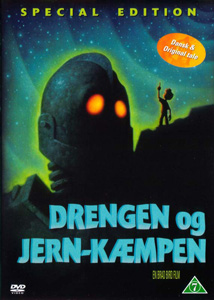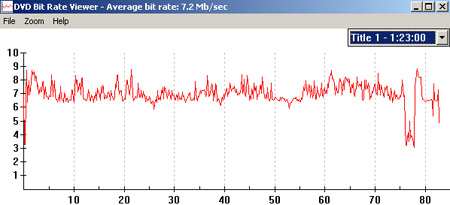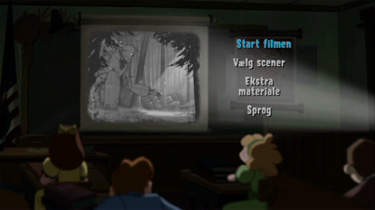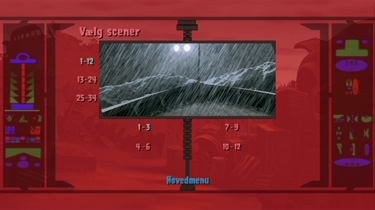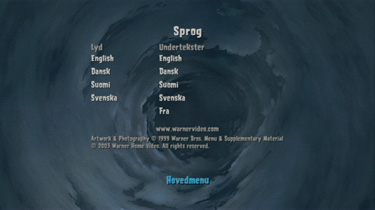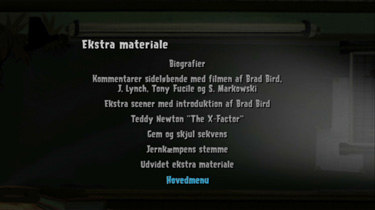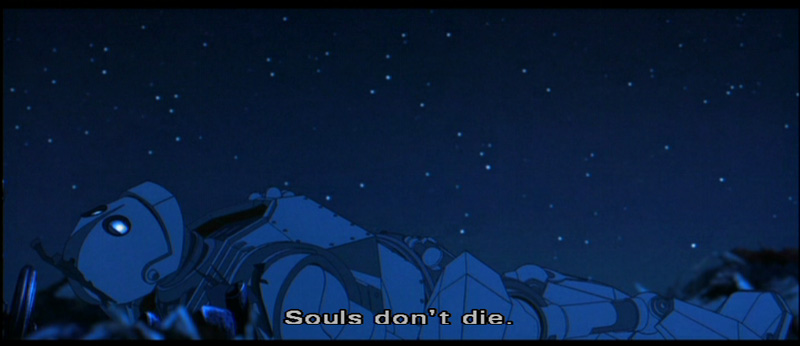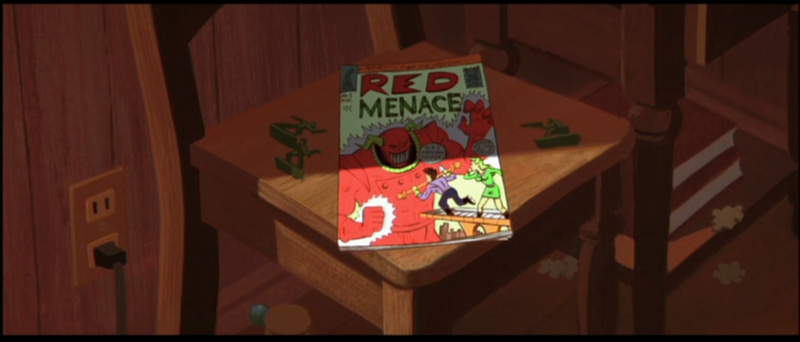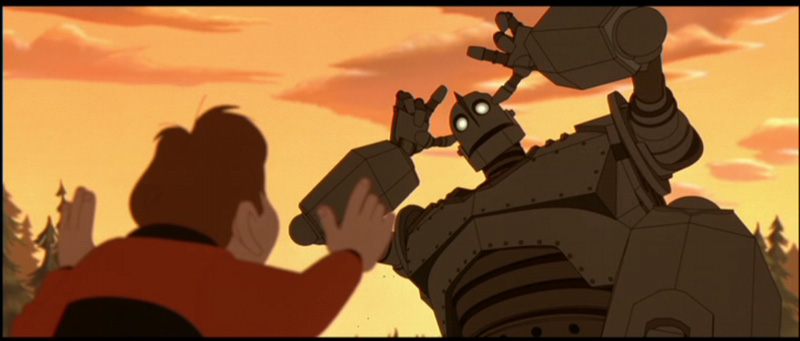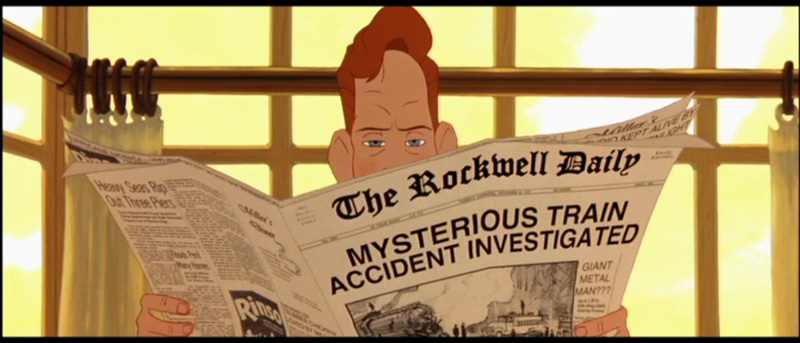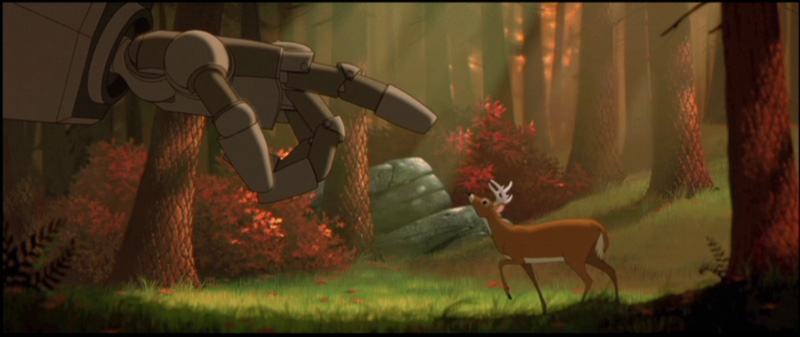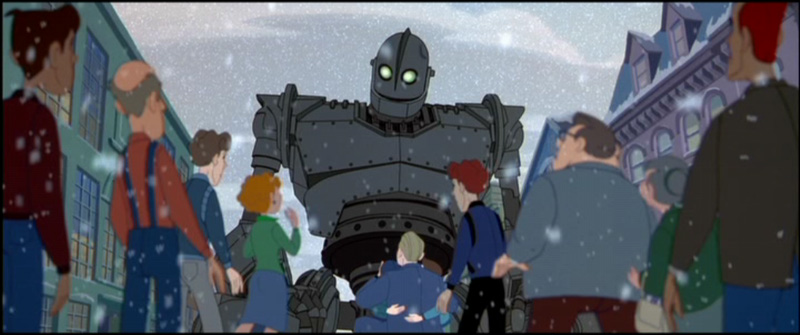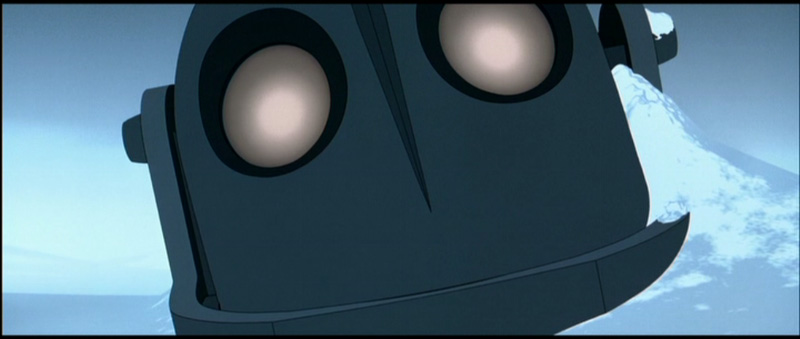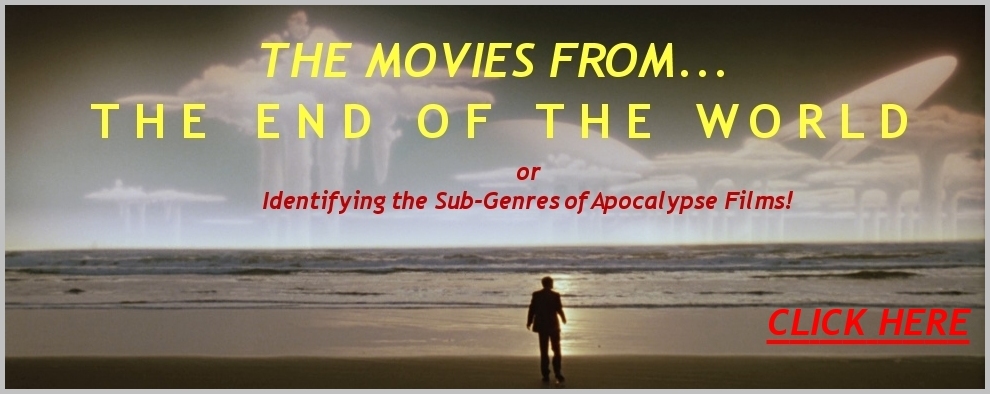![]()

![]()
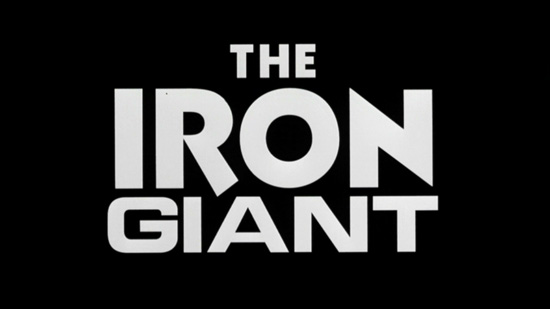
(aka "Drengen og Jern-kæmpen" )
directed
by Brad Bird
USA 1999
In 1968 the children’s book, ”The Iron Giant” was written by
Ted Hughes, where an Iron Giant comes to earth, becomes friends with a farmers
son and eventually saves earth by fighting an evil space monster the size of
Australia. The book fascinated Pete Townshend of “The Who”, who wanted to make
it into a musical after “Tommy”. Thus so the project landed at Warner. Sadly,
Hughes never got to see his book as film, as he died short before its
completion.
After leaving “The Simpsons”, where he had been the creative consultant since
1989, Bird had his pick amongst the projects and was intrigued by “The Iron
Giant”. After having read the book, he suggested some changes, the central,
“What if a gun had a soul?”, and while Townshend and Warner was
skeptical, he
was allowed to go on. Originally trained as an animator at Disney, his sense
of story structure and his genial creative mind made him hot property, and
friend John Lasseter of Pixar had attempted to get Bird on board to helm “A
Bugs Life”, but Bird wanted to be his own boss for a while.
Bird rewrote the script, adding human aspect and a reference to the paranoia
of the fifties, as the book and film takes place in 1957, like the red scare,
the sputnik, the nuclear naivety and low budget science fiction films, making
it into a social conscious construction with touches of “ET” and “Mechanoids”.
For reasons unknown, a 50 foot robot comes to earth and crashes outside the
little town of Rockwell, Maine. Here he becomes friends with Hogarth, and in
turns the beatnik Dean, as Dean has a scrap yard and the robot eats metal.
Harmony is interrupted by Kent Mansley, who works for the government, and soon
Rockwell is invaded by the military in order to get rid of this danger to
society. Facing his destruction, the robot turns into a omnipotent killer
robot in order to defend itself. As Kent Mansley, who works for the
government, orders a nuclear strike to kill the robot, it chooses to sacrifice
itself in order to save the town.
“The Iron Giant” was overlooked during its theatrical run, hardly making half
its budget, largely thanks to Warner, who really didn’t believe in it. It
wasn’t until it was released on home video that it was discovered and today it
is considered a masterpiece of animated cinema, highly praised by animators as
Lasseter and Miyazaki. In an interview, Miyazaki directly accuses the American
audience of having no sense of animation, of dismissing anything without the
Disney seal. But where Warner failed, Pixar triumphed and got Bird onboard,
who in turns made “The Incredibles”, perhaps the best Pixar film since “Toy
Story”. And I can’t help wonder, if the real reason for Warner to re-release
“The Iron Giant” isn’t an attempt to cash in on Bird’s recent success.
But why is “The Iron Giant” one of the greatest achievements in animated
cinema? First of all, it relies on old school techniques. While it is CG
assisted effects, in terms of “line drawing” to make contours look hand-drawn,
everything was done as in the old days, creative minds and their tusch.
Secondly, the story: straight forward simple, paying attention to its
characters and giving them a heart. Thirdly, Brad Bird, who might just be one
of the most creative minds ever to work within animation.
Already during his years with “The Simpsons”, his touch was visible. For
instance, when making “The Shining” episode, Bird asked the animators to
imitate the use of symmetrical wide-angle shots (like Kubrick), and when “The
Simpsons” was suggested “The Flintstones” of our generation, he couldn’t
resist to open, what many consider the best episode ever, “The Springfield
monorail” episode, with copying the start of “The Flintstones”, even having
Homer singing his version of the theme song.
Last and not the least, “The Iron Giant” has heart, a lot of heart. While the
authorities are busy making up new dangers, creating a world where anything
not made by “us” is made in order to destroy “us”, never caring or asking
“why?”, an innocent boy, thus not yet programmed, finds not only a friend, but
the greatest toy one could ever wish for. The message is clear: We must defend
us against actual dangers, not against made up dangers, otherwise we only
destroy ourselves. As such, the theme of the story is even more actual today,
as we live in the most xenophobic times since the red scare.
Above all, “The Iron Giant” demonstrates the potency of a good story. This is
a classic to be seen and re-seen, that will touch the heart of all
generations.
Posters
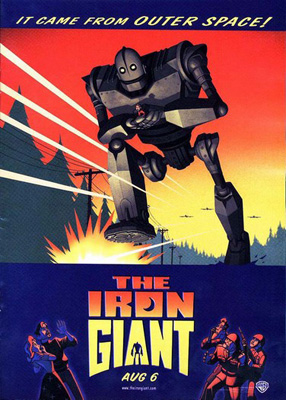 |
Theatrical Release: July 31, 1999
Reviews More Reviews DVD Reviews
DVD Review: Sandrew Metronome (Special Edition) - Region 2 - PAL
Big thanks to Henrik Sylow for the Review!
| DVD Box Cover |
|
CLICK to order from:
|
| Distribution |
Sandrew Metronome Region 2 - PAL |
|
| Runtime | 1:23:01 (4% PAL speedup) | |
| Video |
2.34:1 Original Aspect Ratio
16X9 enhanced |
|
|
NOTE: The Vertical axis represents the bits transferred per second. The Horizontal is the time in minutes. |
||
| Bitrate |
|
|
| Audio | 5.1 Dolby Digital English, Danish (dub), Swedish (dub), Finnish (dub) | |
| Subtitles | English, Danish, Swedish, Finnish, None | |
| Features |
Release Information: Studio: Sandrew Metronome Aspect Ratio:
Edition Details: Chapters 34 |
|
| Comments |
The new digitally restored and
remastered image is simply beautiful. There are occasional and minor edge
enhancements, halos and surface issues, but over all, it is very
beautiful. Even the gyro-mobile-swing sequence, each single frame stands
completely sharp. The DVD comes with 384 Kb/s 5.1 Dolby Digital track, which is good, but having a DTS or a Home Theatre optimized track would have made it even better. The additional material begins with a great audio commentary, while chatty, is very informative in terms of production and so forth. It's followed by scrapped sequences all introduced by Bird and a neat little featurette about Teddy Newton and his out of this world ideas. But then the quality of the material drops, as the rest is minute(s) long small production featurettes. For a special edition of one of the most important animated features, it is pretty thin. Considering Pixar and recent Disney material, I would have expected a 2-disc SE, with DTS, with an additional Making Of documentary, a featurette about Brad Bird and Ted Hughes, and (dreaming here) a Miyazaki introduction. This Danish edition comes with Danish, Swedish and Finnish dubbed sound, and additional subtitles, to allow the youngest viewers to enjoy the film likewise. |
|
|
|
|
|
|
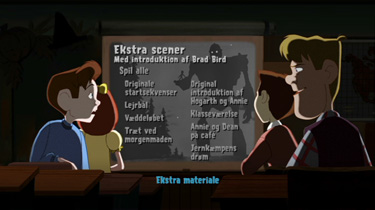 |
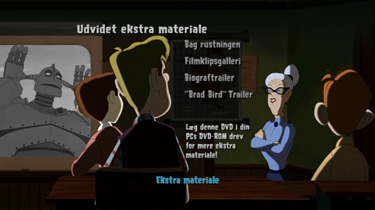 |
Screen Captures
subtitle sample (English only) - captures resized to 800px width from 1016px original
|
|
|
|
|
|
|
|
|
|
|
|
|
|
